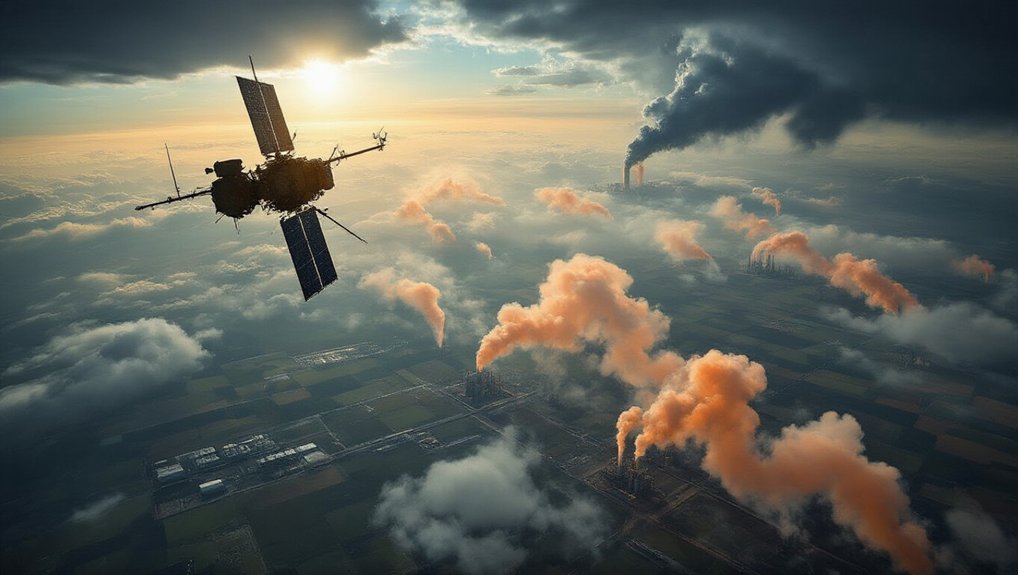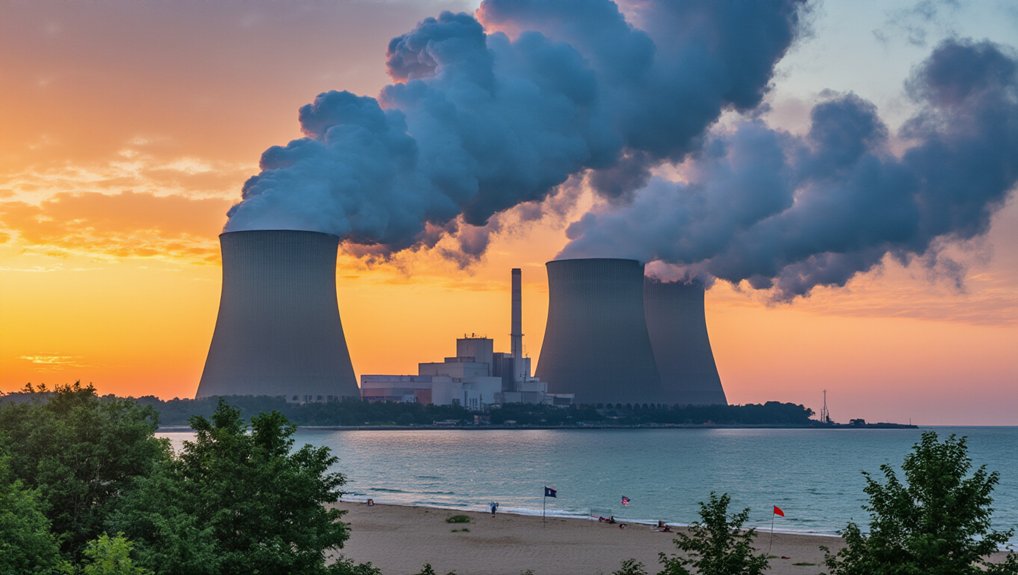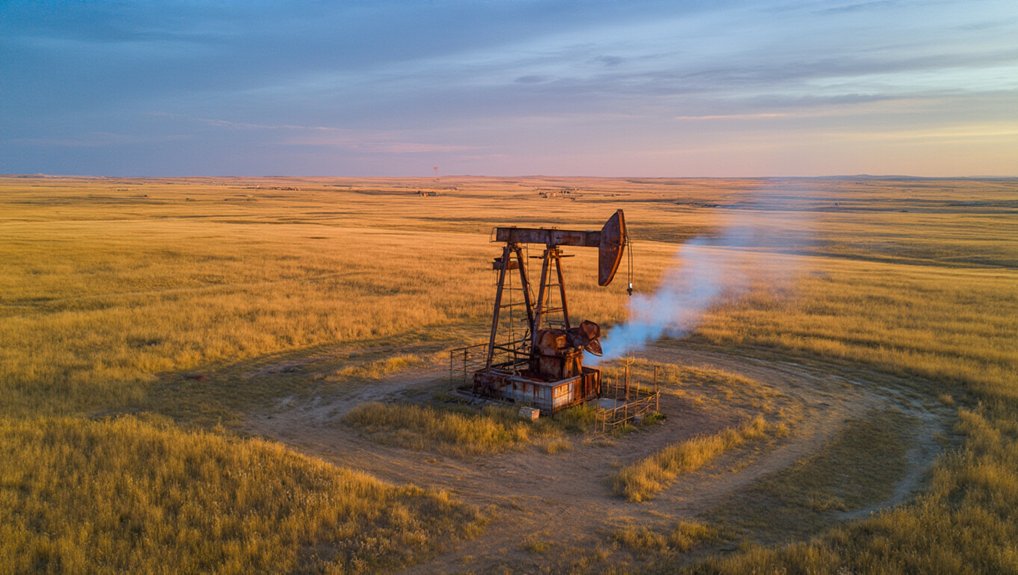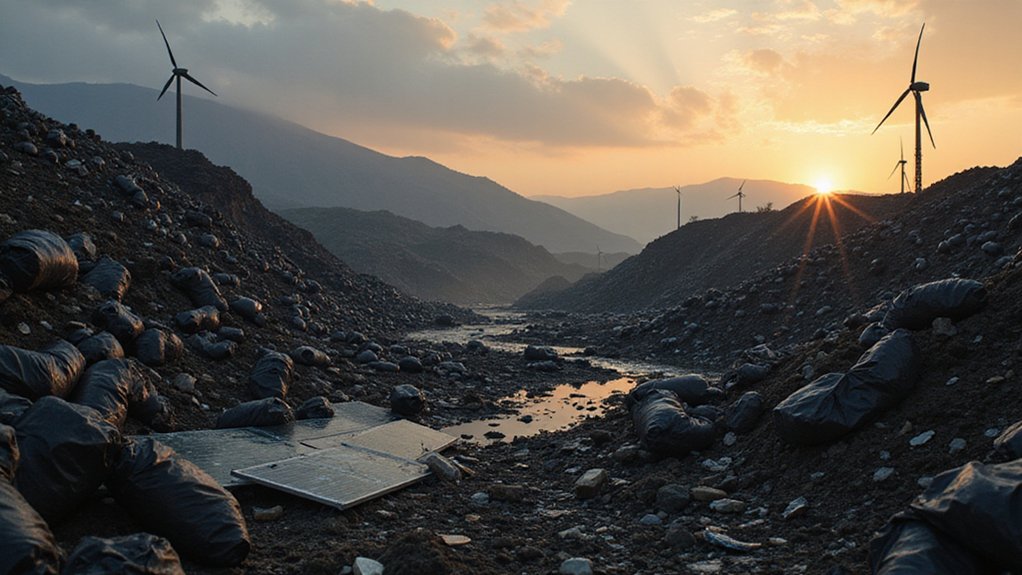After just over a year in orbit, MethaneSAT—Earth’s most sophisticated methane-tracking satellite—has gone silent. The Environmental Defense Fund (EDF) confirmed on July 1, 2025, that their groundbreaking satellite had lost power and stopped responding to commands. Just like that, our best eye in the sky for methane emissions vanished.
Earth’s methane detective has mysteriously gone dark, leaving polluters unwatched and climate scientists scrambling.
The satellite, launched with much fanfare in March 2024, was supposed to transform how we track one of climate change‘s biggest culprits. Methane traps 20-30 times more heat than carbon dioxide. Kind of important to keep tabs on, right?
MethaneSAT wasn’t your average satellite. This thing could detect methane changes as small as three parts per billion while completing 15 Earth orbits daily. It monitored 50 key regions covering over 80% of global oil and gas production. Pretty impressive tech for something that’s now practically space junk.
Communication first cut out on June 20, 2025. Despite frantic recovery attempts, the satellite remained stubbornly mute. No one’s sharing exactly what went wrong yet. Technical difficulties, they say. How helpful. The mission’s unexpected termination came as a shock given the substantial total investment cost of $88 million poured into the project.
The timing couldn’t be worse. International Energy Agency data shows global methane emissions are about 70% higher than what countries officially report. Someone’s not being honest. That’s exactly what MethaneSAT was designed to expose.
Unlike other methane-monitoring satellites, MethaneSAT could track both concentrated point sources and dispersed emissions across wide terrains. Its data was freely accessible in near real-time—creating nowhere to hide for major polluters.
Now there’s a gap in our monitoring network. Other satellites like TROPOMI, Carbon Mapper, and GHGSat are still up there, but none combine MethaneSAT’s broad coverage with detailed source attribution. This loss comes at a critical time when battery storage expansion is helping transform our energy landscape toward greener solutions. This setback threatens the ambitious goal of reducing global methane emissions by 70% by 2030, which could have had climate benefits equivalent to shutting down one-third of the world’s coal plants.
EDF insists this isn’t game over for methane monitoring. They’re framing the mission as “pivotal, but not final” in broader efforts to cut emissions.
Meanwhile, the world has temporarily lost its most vigilant methane watchdog. And in the climate crisis timeline, even temporary setbacks matter.
References
- https://www.space.com/space-exploration/satellites/climate-satellite-methanesat-backed-by-bezos-and-google-fails-in-space-after-just-1-year
- https://news.harvard.edu/gazette/story/2023/03/methane-tracking-satellite-may-be-fastest-way-to-slow-climate-change/
- https://www.theregister.com/2025/07/02/methanesat_likely_not_recoverable/
- https://www.bezosearthfund.org/news-and-insights/what-to-know-about-methanesat-taking-climate-surveillance-new-heights
- https://phys.org/news/2025-07-bezos-methane-tracking-satellite-lost.html









